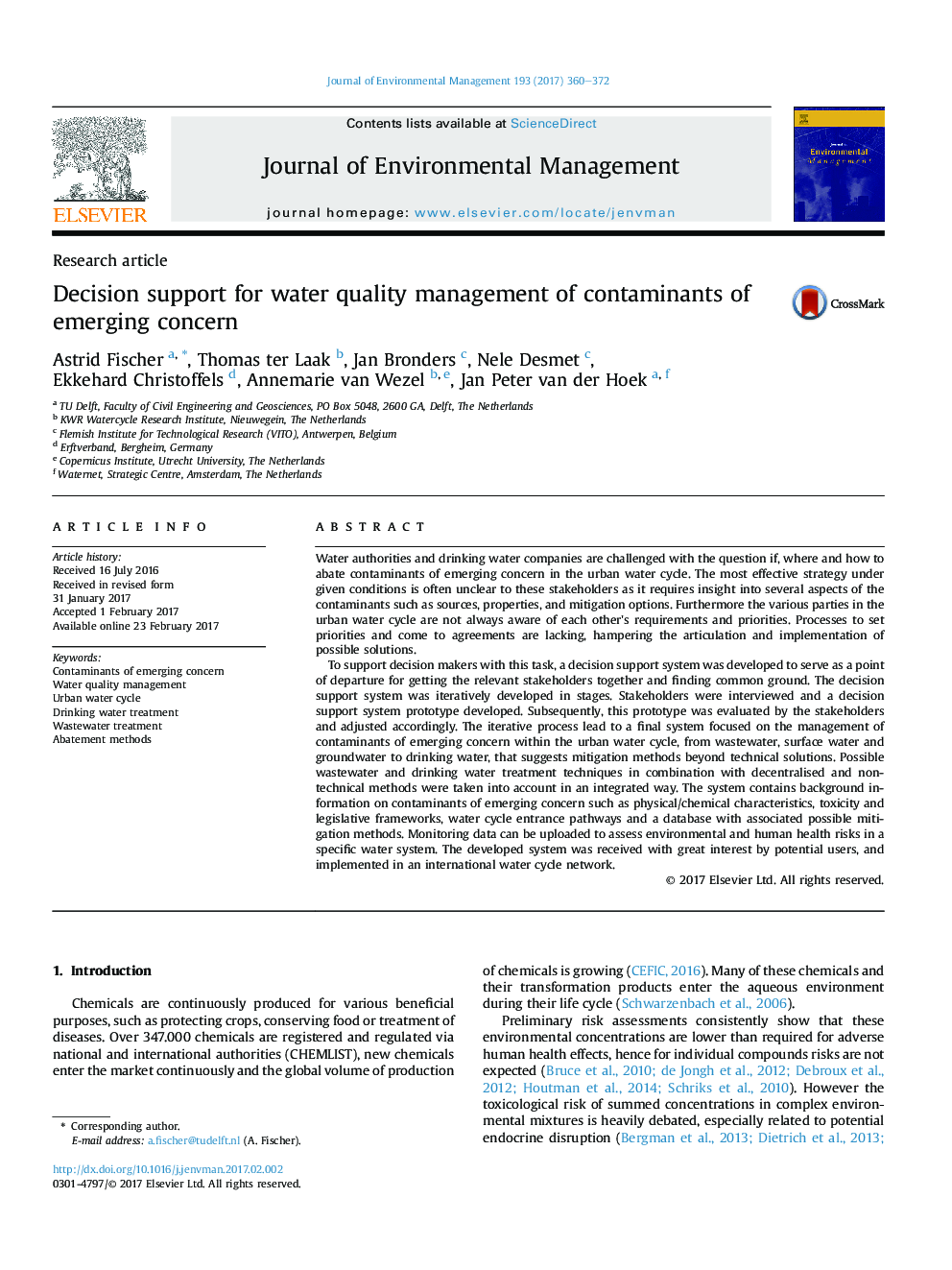| Article ID | Journal | Published Year | Pages | File Type |
|---|---|---|---|---|
| 5116839 | Journal of Environmental Management | 2017 | 13 Pages |
â¢A DSS to facilitate management of CECs in the water cycle was created.â¢The DSS was iteratively developed in stages.â¢Stakeholders were interviewed and a DSS prototype developed.â¢The final DSS suggests mitigation methods beyond technical solutions.â¢Integrating conventional water treatment, decentralised and non-technical methods.
Water authorities and drinking water companies are challenged with the question if, where and how to abate contaminants of emerging concern in the urban water cycle. The most effective strategy under given conditions is often unclear to these stakeholders as it requires insight into several aspects of the contaminants such as sources, properties, and mitigation options. Furthermore the various parties in the urban water cycle are not always aware of each other's requirements and priorities. Processes to set priorities and come to agreements are lacking, hampering the articulation and implementation of possible solutions.To support decision makers with this task, a decision support system was developed to serve as a point of departure for getting the relevant stakeholders together and finding common ground. The decision support system was iteratively developed in stages. Stakeholders were interviewed and a decision support system prototype developed. Subsequently, this prototype was evaluated by the stakeholders and adjusted accordingly. The iterative process lead to a final system focused on the management of contaminants of emerging concern within the urban water cycle, from wastewater, surface water and groundwater to drinking water, that suggests mitigation methods beyond technical solutions. Possible wastewater and drinking water treatment techniques in combination with decentralised and non-technical methods were taken into account in an integrated way. The system contains background information on contaminants of emerging concern such as physical/chemical characteristics, toxicity and legislative frameworks, water cycle entrance pathways and a database with associated possible mitigation methods. Monitoring data can be uploaded to assess environmental and human health risks in a specific water system. The developed system was received with great interest by potential users, and implemented in an international water cycle network.
